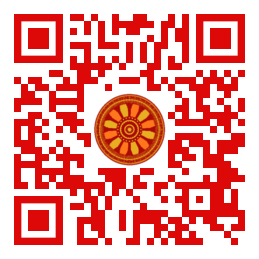
:: International Transaction Journal of Engineering, Management, & Applied Sciences & Technologies
http://TuEngr.com

ISSN 2228-9860
eISSN 1906-9642
CODEN: ITJEA8
FEATURE PEER-REVIEWED ARTICLE
Vol.13(1)(2022) |
A Hybrid New Gravitational Coefficient Function of Gravitational Search Algorithm with Mutation for Search Performance
 Pattrawet Tharawetcharak, Aumnad Phdungsilp, Suparatchai Vorarat (Graduate Program in Engineering Management, College of Innovative Technology and Engineering, Dhurakij Pundit University, Bangkok, THAILAND).
Pattrawet Tharawetcharak, Aumnad Phdungsilp, Suparatchai Vorarat (Graduate Program in Engineering Management, College of Innovative Technology and Engineering, Dhurakij Pundit University, Bangkok, THAILAND).
Disciplinary: Optimization, Engineering Management.
doi: 10.14456/ITJEMAST.2022.10
Keywords: Gravitational Search Algorithm (GSA); Mutation; Search Performance; Benchmark Function.
AbstractThis paper proposes a hybrid New Gravitational Coefficient Function of Gravitational Search Algorithm with Mutation (NGCFGSAM). Since most of the hybrid algorithms has been concerned with the search performance of solution. This study investigates the features that influence the algorithm on global search performance. The novel hybrid algorithm is compared to previous functions in the literature based on six benchmark functions, including both unimodal landscape functions and multimodal landscape functions. The experimental results are shown that the proposed NGCFGSAM outperforms the conventional benchmark functions. The proposed hybrid algorithm worked well on multimodal landscape functions. Better solutions compensate for the slower convergence rate by balancing the exploration and exploitation phases. For the future work, studies on the investigation and rigorously prove the parameter turning for convergence rate. More benchmark functions and more algorithm comparison tests should be investigated.Paper ID: 13A1J
Cite this article:
Tharawetcharak, P., Phdungsilp, A., and Vorarat, S.(2022). A Hybrid New Gravitational Coefficient Function of Gravitational Search Algorithm with Mutation for Search Performance. International Transaction Journal of Engineering, Management, & Applied Sciences & Technologies, 13(1), 13A1J, 1-12. http://TUENGR.COM/V13/13A1J.pdf DOI: 10.14456/ITJEMAST.2022.10
References
- Dahiya, B. P., Rani, S., & Singh, P. (2019). A hybrid artificial grasshopper optimization (HAGOA) meta-heuristic approach: A hybrid optimizer for discover the global optimum in given search space. International Journal of Mathematical, Engineering and Management Sciences, 4(2), 471-488.
- Das, P. K., Behera, H. S., & Panigrahi, B. K. (2016). A hybridization of an improved particle swarm optimization and gravitational search algorithm for multi-robot path planning. Swarm and Evolutionary Computation, 28, 14-28.
- Dowlatshahi, M. B., & Nezamabadi-pour, H. (2014). GGSA: A grouping gravitational search algorithm for data clustering. Engineering Applications of Artificial Intelligence, 35, 114-121.
- Fox, B. R., & McMahon, M. B. (1991). Genetic operators for sequencing problems. In Foundations of genetic algorithms, 1, 284-300.
- Guo, Z., Zhang, W., & Wang, S. (2021). Improved gravitational search algorithm based on chaotic local search. International Journal of Bio-Inspired Computation, 17(3), 154-164.
- Hosseinabadi, A. A. R., Kardgar, M., Shojafar, M., Shanshirband, S., & Abraham, A. (2016). Gravitational search algorithm to solve open vehicle routing problem. In innovations in Bio-Inspired Computing and Applications, Springer, Cham, 424, 93-103.
- Jebari, K., & Madiafi, M. (2013). Selection methods for genetic algorithms. International Journal of Emerging Sciences, 3(4), 333-344.
- Katoch, S., Chauhan, S. S., & Kumar, V. (2021). A review on genetic algorithm: past, present, and future. Multimedia Tools and Applications, 80(5), 8091-8126.
- Kim, T. K. (2017). Understanding one-way ANOVA using conceptual figures. Korean Journal of Anesthesiology, 70(1), 22.
- Kumar, Y., & Sahoo, G. (2014). A review on gravitational search algorithm and its applications to data clustering & classification. International Journal of Intelligent Systems and Applications, 6(6), 79-93.
- Mansouri, R., Nasseri F., & Khorrami, M. (1999). Effective time variation of G in a model universe with variable space dimension. Physics Letters A, 259(3-4), 194-200.
- Michalewicz, Z. (1992). Genetic Algorithms+ Data Structure= Evolution Programs Springer, New York.
- Michalewicz, Z., & Schoenauer, M. (1996). Evolutionary algorithms for constrained parameter optimization problems. Evolutionary computation, 4(1), 1-32.
- Packiasudha, M., Suja, S., & Jerome, J. (2017). A new cumulative gravitational search algorithm for optimal placement of FACT device to minimize system loss in the deregulated electrical power environment. International Journal of Electrical Power & Energy Systems, 84, 34-46.
- Premalatha, K., & Natarajan, A. M. (2009). Hybrid PSO and GA for global maximization. International Journal of Open Problems Compt. Math, 2(4), 597-608.
- Rashedi, E., Nezamabadi-Pour, H., Saryazdi, S., & Farsangi, M. M. (2007). Allocation of static var compensator using gravitational search algorithm, World. 1, 10.
- Rashedi, E., Nezamabadi-Pour, H., & Saryazdi, S. (2009). GSA: a gravitational search algorithm. Information sciences, 179(13), 2232-2248.
- Santra, D., Mukherjee, A., Sarker, K., & Mondal, S. (2021). Hybrid Genetic Algorithm-Gravitational Search Algorithm to Optimize Multi-Scale Load Dispatch. International Journal of Applied Metaheuristic Computing, 12(3), 28-53.
- Saravanan, C. & Srinivasan, K. (2016). Optimal extraction of photovoltaic model parameters using gravitational search algorithm approach. Circuits and Systems, 7(11), 3849-3861
Other issues:
Vol.13(2)(2022)
Vol.12(13)(2021)
Vol.12(12)(2021)
Archives
Call-for-Papers
Call-for-Scientific PapersCall-for-Research Papers: ITJEMAST invites you to submit high quality papers for full peer-review and possible publication in areas pertaining engineering, science, management and technology, especially interdisciplinary/cross-disciplinary/multidisciplinary subjects.
To publish your work in the next available issue, your manuscripts together with copyright transfer document signed by all authors can be submitted via email to Editor @ TuEngr.com (no space between). (please see all detail from Instructions for Authors)
Publication and peer-reviewed process:
After the peer-review process, articles will be on-line published in the available next issue. However, the International Transaction Journal of Engineering, Management, & Applied Sciences & Technologies cannot guarantee the exact publication time as the process may take longer time, subject to peer-review approval and adjustment of the submitted articles.